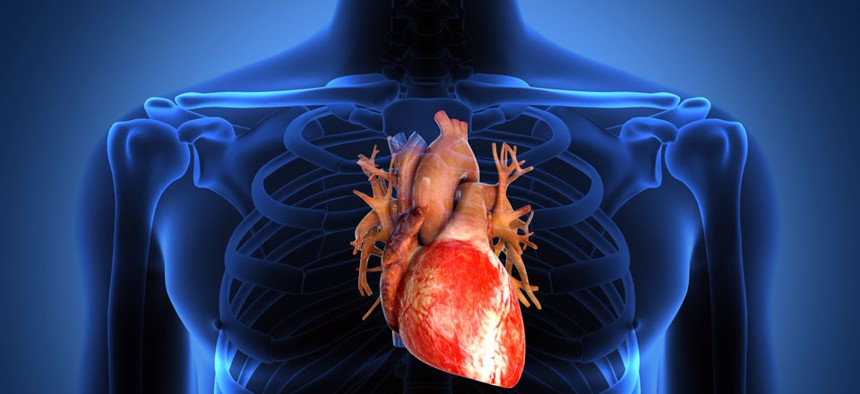Medical Researchers Get Closer to Creating Working, Built-From-Scratch Human Heart

Kozorez Vladislav/Shutterstock.com
An organ that the body would recognize as its own is just around the corner.
Organ transplantation—removing a piece of one person and sewing it into another—is one of the weirder things that humans have figured out how to do. And our bodies don't necessarily like it. Immunosuppressive drugs can keep a person's body from noticing that there's a foreign object in there, for awhile, at least. But those drugs take their own toll, and eventually, the body can get wise and start to reject the organ.
Even so, actual humans organs are so good at doing their jobs that, in many cases, there isn’t a better alternative. Doctors and researchers have been trying, for instance, to develop an artificial heart for thirty-five years. The first artificial heart, implanted in 1969, kept its recipient alive for three days. On Monday, Carmat, a French biotechnology company that's created the world's newest artificial heart—the first to mix synthetic and biological materials—announced that the second of four patients participating in a trial had received their transplant.
The Carmat heart's valves are made of tissue from a cow's heart, as are the membranes that come into contact with the patient's blood. It's meant to last for up to five years, to extend the life of patients waiting for donor hearts or who aren't eligible for that sort of transplant. The Carmat's first test patient received his heart this past December and lived for 75 days; that trial was considered a success.
Even better than a donated heart though, and even better than a functioning artificial one, would be a bioartificial heart, grown from the patient's own cells. An organ like that the body would recognize as its own.
In the past few years, medical researchers have been making steady progress towards creating one. Cleaning out the cells from the heart's scaffold—decellularizing it—is the first step. This is what it looks like when you empty a rat's small heart of all its cells:
What's left there is a structure of collagen and other proteins that helps the living cells grow and stay in just the right place. The next step is filling the scaffold with new cells, in just the right places, ready to start expanding and contracting. The last step: encourage it to start beating.
In 2008, at the University of Minnesota, a team led by Dr. Doris Taylor used this technique to make a rat's heart from new cells and convince it to beat. It didn't pump much blood—just 2 percent of the capacity it might have. But it worked.
Since then, Taylor told Nature last year, she's managed to create hearts that pump much more efficiently, up to 25 percent of normal capacity. She and other researchers in the field are working on larger hearts too: The scaffold of a pig's heart, for instance, is close enough to a human's that it could serve as the basis of bioartificial human heart. These researchers are getting closer to the moment where they're going to start talking to the FDA about transplanting bioartificial grafts onto human hearts. It won't be a whole heart at first, most likely. They'll start with one part—a valve, probably. Soon enough though, it might be possible to fill a whole heart with a patient's own cells and transplant it back into her body.
(Image via Kozorez Vladislav/Shutterstock.com)


